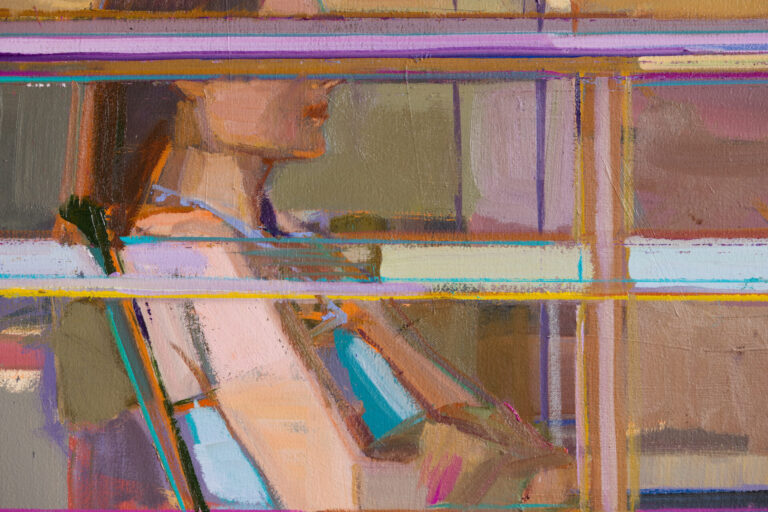Hiroshi Sato, Transvaluation
Aug 30 — Sep 30, 2023
Marrow Gallery presents Transvaluation, San Francisco-based painter Hiroshi Sato’s fifth solo exhibition with the gallery. Featuring all new work, the exhibition focuses on Sato’s recent confrontations with the current cultural moment we are living through in a social and political landscape marked by the COVID-19 pandemic, the rise of fascism, and the implications of rapidly advancing technology. Here, Sato makes a case for sincere painting as an antidote to the increasingly absurd results of, and responses to, late-stage capitalism.
Inspired by the socio-economic existentialism of Edward Hopper, Sato portrays scenes of isolation and estrangement in the San Francisco of today, illustrative of the social consciousness of post-pandemic alienation. Even when Sato’s figures do gather in groups, the compositions evoke a palpable tension between them, and the underlying threat of isolation – a social experience all too familiar in these contentious times. Where Hopper painted Depression-era New York, Sato’s San Francisco is also one in financial crisis, an urban backdrop in freefall. This is, in part, autobiographical of Sato’s experience as an artist living in a city where the high cost of living has pushed many artists out, and remains prohibitive even as it becomes a ghost town.
Sato’s use of light and color, evocative of the Bay Area Figurative Movement, ushers in a new direction in the painter’s practice, away from realism and towards more abstract figuration. Both a further homage to the place where his paintings are made and another level of political commentary, this form offers the material counterpoint to Sato’s metaphysical sincerity. At a time when much of socialization and art-viewing take place in digital spaces, Sato’s insistence on the unmistakably physical characteristics of paint carries a powerful political message, resisting the lure of cultural grifts like NFTs and AI generated illustration. It also disrupts the visual cues by which we identify people, utilizing a sparseness of signifiers to lend ambiguity to his characters’ identities in terms of gender, race, and class.
On every level, Sato’s newest body of work evinces his belief that “You cannot be an artist today and not examine what is going on now.”
Check gallery website for hours and additional info
